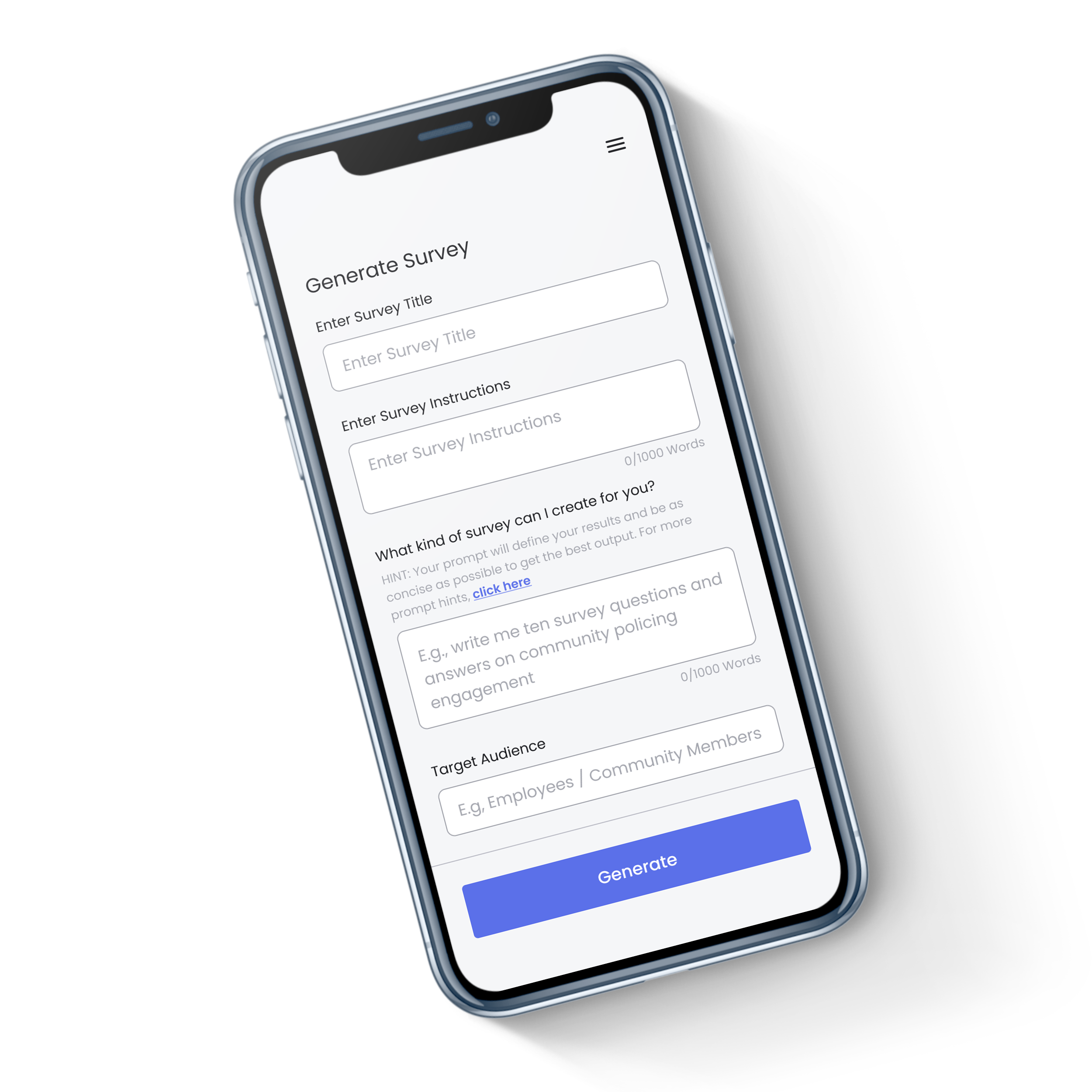Introduction
Constructive community feedback is vital for building public trust and tailoring law enforcement to local needs. However, many police departments lack modern systems to solicit perceptions from all segments of the populace. Relying solely on in-person forums captures input from a vocal minority. To understand your full community, it is essential to meet people where they are by harnessing diverse digital channels, social media engagement, two-way messaging, and polling. This allows law enforcement leaders to gain a comprehensive view of evolving community priorities. This guide explores turnkey technology solutions police departments nationwide are using to digitize and streamline public feedback efforts. Follow their lead to access unfiltered insights that drive strategic improvements.
Centralized Platforms Are Turnkey Feedback Hubs
Purpose-built online platforms offer police departments a turnkey solution for launching multiple forms of community engagement on one centralized hub. The Officer Survey platform, for example, enables agencies to:
- Field automated surveys to collect confidential feedback on any topic.
- Host forums and Q&As where residents interact with police officials on current issues.
- Publish press releases and department news to boost transparency.
- Share multimedia community relations content like videos of the chief addressing concerns.
- Provide residents with QR codes to solicit feedback.
- Instantly poll citizens on priorities, sentiments, and reactions to new initiatives using Officer Survey polling system.
Centralized platforms are customizable to each agency’s needs. With handy templates and tools that remove technology barriers, agencies of any size can swiftly implement modern digital engagement.
Social Media Expands Your Reach
With 7 in 10 Americans using social media, maintaining an active agency presence allows police leaders to meet residents where they already congregate online. Creative ways to leverage platforms like Facebook, Instagram, and X (Twitter) for community relations include:
- Hosting monthly Facebook Live community Q&A sessions with leadership where residents ask questions in real-time.
- Sharing behind-the-scenes clips of officers positively engaging with the public. Humanize your work.
- Posting department updates, public safety tips, introductions of new hires, and good news stories.
- Responding promptly and transparently to comments and criticisms.
- Running polls, surveys, and contests to generate fun engagement.
- Following community groups and sharing their content to expand visibility.
Social media provides a direct line of communication with your community. Leverage its reach.
Text Messaging and SMS Opt-Ins Engage Younger Residents
Email is fading among younger demographics, while texting has soared as the preferred communication method for 80% of 18 to 29-year-olds. SMS messaging enables agencies to reach residents directly in real time via:
- Public safety alert broadcasts on road closures, emergencies, etc.
- Department news bulletins like leadership changes or event invites.
- Links to community surveys and polls hosted on your engagement platform.
- Two-way messaging where residents can text questions and input to a monitored number.
Promote SMS opt-in signups on your website and social channels. Integrate text messaging into all community relations initiatives to boost young resident participation.
Reader Boards Share Updates Where People Congregate
Reader board signs placed around town share public notices and even solicit feedback through prompts like “Text your comments to…” Strategically locate boards near:
- Heavily trafficked public spaces like parks and downtowns.
- Department facilities like precincts and town hall buildings.
- Popular businesses that agree to host a board.
- Events and community gatherings.
Use boards to promote surveys and SMS opt-ins, share safety tips, highlight staff, and update on new initiatives. They offer high-visibility passive engagement.
QR Codes Link the Physical and Digital
QR codes – scannable images that open links – bridge physical and digital channels. Affix memorable QR code signs, stickers, or flyers around your community that residents can scan with their smartphone camera to:
- Take a community survey.
- Sign up for text alerts.
- View your social media profiles.
- Access your digital community engagement hub.
- Watch department videos.
QR codes distributed at events, on flyers, and across high-traffic areas drive traffic to your digital outlets and make providing feedback ultra convenient.
Crowdsourcing Invites Solutions
Crowdsourcing through social media generates creative ideas and solutions to shared public safety challenges. Some ways to effectively crowdsource include:
- Prompting digital brainstorms around issues like youth crime prevention and cold cases.
- Sharing a community problem and inviting collaborative solutions using a hashtag like #NeighborhoodWatchIdeas.
- Holding contests for PSA video or poster submissions on topics like the dangers of texting while driving.
- Promoting hackathons where tech enthusiasts voluntarily develop apps that tackle local issues like reporting graffiti.
Crowdsourcing leverages your community’s collective experiences.
Mine Internal Data for Insights
While external polling is invaluable, existing department data offers straightforward community insights. Analyze records and statistics around:
- Crime rates, call types, response times, beat assignments, and enforcement actions to spot trends and gaps.
- Complaints against personnel and settlements/lawsuits to identify problem areas and policies in need of reform.
- Demographics of crime victims, witnesses, suspects, and arrestees to assess equity concerns.
- Traffic and pedestrian stop demographics to determine indications of bias.
- Officer retention rates, sick leave use, morale survey results, and exit interview feedback to gauge internal culture challenges that impact community relations.
Internal analytics provides an unfiltered baseline understanding of community issues. Pair it with external polling for the full picture.
Policing’s complex challenges require multifaceted community relationships and engagement strategies. By embracing versatile platforms, social media, text messaging, QR codes, crowdsourcing, and data analytics, agencies gain holistic insights to drive continuous improvements. The public is your police department’s lifeblood. Meet them where they are, listen without defensiveness, and act on feedback. These tools enable meaningful action.
Conclusion
Community perceptions are the ultimate report card on policing effectiveness. But gathering unbiased, demographically diverse feedback requires utilizing modern platforms citizens embrace. Centralized online engagement hubs, social media, SMS messaging, reader boards, QR codes, crowdsourcing, and data mining empower law enforcement leaders to access transparent community insights. The input derived enables agencies to strengthen training, build transparency, improve procedures, and align operations to community values. While critical feedback can sting, it presents invaluable opportunities for reform. Listen, learn, and lead. The technology exists to access your community’s unfiltered voice. Are you ready to hear it?








